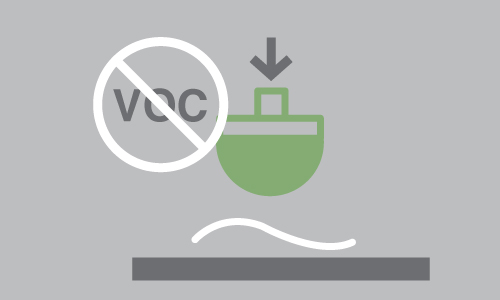Flexographic printing has become one of the most popular forms of printing over the past few decades for a variety of reasons. Immensely versatile, flexographic printers can handle a diverse array of substrates, color runs, solvent configurations to satisfy printing needs.
Top Challenges for Flexographic Printing Operations
From the many different solvent configurations needed to satisfy a unique printing need to the chemicals used in cleaning machines, volatile organic compounds are present in every step in the flexographic printing process.
Volatile Organic Compounds, or VOCs, are often considered a “necessary evil” of the entire printing industry, as printing doesn’t happen without solvents, and the use of solvents creates VOCs. Even if the industry has moved toward less toxic water-based inks, the use of such inks still presents a challenge when printing on film or foil.
Throughout the process, there are ways to reduce your environmental impact using preventive measures, but the most common solution to the VOC challenge is to destroy the contaminants in your exhaust streams through oxidation/combustion.
Choosing a VOC Abatement System: 4 Important Considerations
Choosing a VOC abatement system for a flexographic facility is not always easy. Remember you have to look at the size, layout, operating hours, and other specific details about your operation before deciding. Throughout the consultation process, you will discuss all of these needs and more with your VOC Abatement system manufacturer, and whether you are looking at a catalytic or thermal oxidizer, you can expect to discuss the following factors:
Heat Transfer
Operating at temperatures ranging from 500°F for catalytic oxidizers to 1,800°F or more for thermal oxidizers, operating costs to fuel these pieces of equipment quickly begin to increase with the destruction temperature. However, with efficient heat transfer mechanisms, you can maximize the life of the energy you use.
Many oxidizers feature heat transfer mechanisms that make them ultra-energy efficient, greatly reducing operating costs in the long run.
Temperature Controls
Depending on the components of your exhaust streams, your oxidizer will need to operate at specific temperatures—no more, no less. If the temperature is too low, your VOC destruction efficiency will suffer. If it’s too high, your operating costs and risk for fire will increase, the life of the oxidizer will decrease, and the oxidation process could actually result in the creation of unwanted effects. Temperature controls allow you to adjust the temperature at which an oxidizer operates to maximize destruction efficiency.
Temperature controls should reflect your unique processes and changes should be easy: Oxidizers from The CMM Group feature a modern PLC with a color touch-screen interface so that you can easily adjust temperatures when you need to.
Precise Volume Capacities
Whether you operate with higher volume at certain points of the year or intend to expand your operations in the future, your VOC abatement solution should be designed with this in mind. The process exhaust volume of your production lines will determine the equipment volume requirements, with additional decisions made on estimated use in the future.
Airflow Controls
Part of the three T’s of combustion, turbulence represents the proper air flow needed to mix oxygen with pollutants. While oxygen content is an important factor (ranging from as little as 2% to over 21% of the volume), the proper mixture of VOC and oxygen is just as important. This is where turbulence comes into play. Proper airflow control is critical to creating this mix for maximum efficiency.
Thermal and Catalytic Oxidizers for Flexographic Printing Operations
There are many more considerations that you will discuss with your pollution control consultant ranging from fuel type to size and much more. Like all pieces of machinery, choosing the best VOC abatement system takes a lot of research. Keep the tips we discussed above in mind when selecting your abatement mechanism in order to find the best fit for your facility.
At The CMM Group, we design catalytic oxidizers, rotary concentrators, and other industrial machines that improve your facility’s operation. Get in touch with us by filling out our online contact form or give us a call today! Learn more about VOC Abatement for Flexographic printing operations here, and download our VOC Abatement Guide to learn more about your path to purchase.




